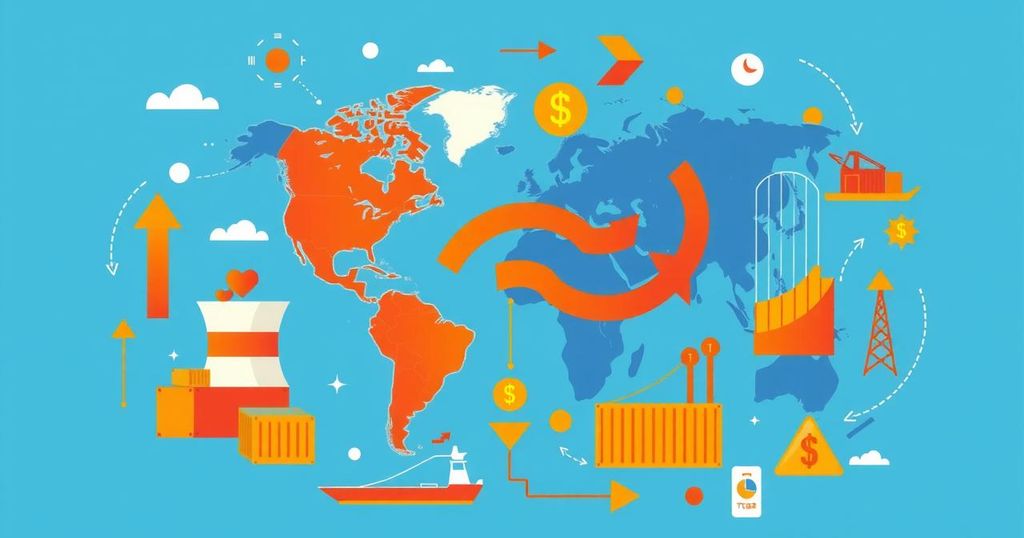India-U.S. Engages in Intense Trade Discussions Ahead of Tariff Changes

India and the U.S. are conducting active trade discussions, with External Affairs Minister S. Jaishankar indicating the possibility of a bilateral trade agreement by the fall of 2025. Despite challenges regarding tariffs and agricultural market protection, both nations are optimistic about the trade negotiations. Jaishankar also highlighted ongoing talks for separate free trade agreements with the EU and U.K. and the potential for strengthening strategic ties in defense and energy.
India and the United States are presently engaged in “very active” and “intense” trade discussions, as emphasized by External Affairs Minister S. Jaishankar. Amidst anticipation regarding U.S. President Donald Trump’s reciprocal tariffs set to take effect on April 2, Mr. Jaishankar refrained from predicting the immediate results of the ongoing negotiations but affirmed that there is a compelling “business case” for a bilateral trade agreement (BTA) between the two nations.
Following a recent meeting between Prime Minister Narendra Modi and President Trump, both sides agreed to commence negotiations for the first phase of the BTA by fall 2025. Mr. Jaishankar highlighted the current state of trade discussions, stating, “There is a very active and intense trade discussion going on at this point in time.” He spoke at an Asia Society session moderated by Kyung-wha Kang, the organization’s President and CEO.
During a five-day visit to India, Brendan Lynch, the assistant U.S. trade representative for South and Central Asia, is engaging in dialogues related to these trade negotiations. While it is unclear if there will be discussions about granting India a waiver once the reciprocal tariffs take effect, Mr. Jaishankar commented on the open discussions that had culminated in the decision for a BTA by the fall of this year.
Mr. Jaishankar expressed confidence that negotiators would secure a beneficial deal, despite expressing awareness of certain concerns within India regarding the agricultural market. He remarked, “There is a strong business case for a BTA with the U.S.,” indicating potential challenges may not be insurmountable.
Additionally, Mr. Jaishankar addressed India’s ongoing negotiations for separate free trade agreements with the European Union and the United Kingdom, deeming these negotiations as “very serious” and advanced. He advocated for patience to see the fruits of these prospective agreements.
On the strategic front, Mr. Jaishankar noted an expectation for a “more substantial” and “higher quality” defense relationship with the U.S. under the Trump Administration, reflecting a willingness to share American technologies more freely. There is also a focus on enhancing energy ties with the U.S. in order to ensure a “stable, reasonable, predictable” energy environment critical for India’s long-term growth.
When reflecting on energy partnerships, Mr. Jaishankar referenced India’s history of importing LNG from the U.S. and expressed interest in increasing this dependency, considering the U.S. as a stable supplier. He observed, “We found, from the energy perspective, a very positive administration,” hinting at collaborative discussions in the technological realm as well.
Mr. Jaishankar made clear that while concerns about tariff challenges exist, the overall assessment of Trump’s policies aligns in many respects with India’s interests. The looming tariff impositions under the Trump administration, however, have invoked apprehensions regarding a potential global trade war, prompting various nations to formulate counter-measures.
In alignment with Trump’s “America First” policy, recent announcements of reciprocal tariffs underscore a geopolitical move, as India has significantly lowered tariffs for key developed countries through bilateral trade agreements and is pursuing similar dialogues with the EU and U.K.
Moreover, India’s recent Union budget decisions to reduce tariffs on specific imports, like Bourbon whiskey and EV segments, signal an openness to negotiate reductions in sector tariffs aimed at fostering goodwill with the U.S. Concurrently, the U.S. is urging India to bolster purchases of American oil, gas, and military platforms to decrease the trade deficit, which stands at approximately $45 billion in India’s favor.
The U.S. remains India’s leading trading partner, with total bilateral trade in goods and services reaching $190 billion in 2023. Furthermore, in the financial year 2023-24, the U.S. ranked as the third-largest source of Foreign Direct Investment into India, amounting to $4.99 billion, accounting for nearly eight percent of total FDI equity inflows.
In summary, India and the U.S. are engaged in significant trade discussions anticipated to lead to a bilateral trade agreement. Despite apprehensions regarding the impact of U.S. tariffs, both nations are striving to secure mutual benefits through negotiations. Additionally, India is pursuing separate trade agreements with the EU and U.K. as it enhances its strategic ties with the U.S., particularly in the realms of defense and energy. The overall economic relationship remains robust, and ongoing dialogues signal a commitment to address emerging challenges productively.
Original Source: www.thehindu.com








